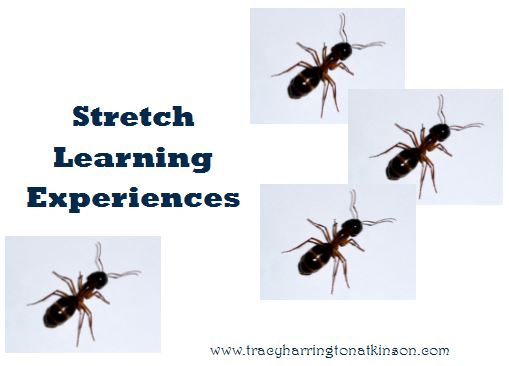Learning journals aid in discovering solutions to difficult situations. Through the act of recording and reflecting on knowledge, a greater understanding of material and even of more difficult knowledge can be achieved. New concepts can be understood through this activity and create possibilities never before imagined. This process may even spur additional questions, queries which lead to even greater searches of knowledge and understanding. Continual growth is essential for all human beings.
“Where to discover yo ur interest and how to amass relevant information are illustrated in the story of an obscure spinster woman who insisted that she never had a chance. She muttered these words to Dr. Louis Agassiz, distinguished naturalist, after one of his lectures in London. In response to her complaint, he replied: “Do you say, madam, you never had a chance? What do you do?”
ur interest and how to amass relevant information are illustrated in the story of an obscure spinster woman who insisted that she never had a chance. She muttered these words to Dr. Louis Agassiz, distinguished naturalist, after one of his lectures in London. In response to her complaint, he replied: “Do you say, madam, you never had a chance? What do you do?”
“I am single and help my sister run a boardinghouse.”
“What do you do?” he asked.
“I skin potatoes and chop onions.”
He said, “Madam, where do you sit during these interesting but homely duties?”
“On the bottom step of the kitchen stairs.”
“Where do your feet rest?”
“On the glazed brick.”
“What is glazed brick?”
“I don’t know, sir.”
He said, “How long have you been sitting there?”
She said, “Fifteen years.”
“Madam, here is my personal card,” said Dr. Agassiz. “Would you kindly write me a letter concerning the nature of a glazed brick?”
“She took him seriously. She went home and explored the dictionary and discovered that a brick was a piece of baked clay. That definition seemed too simple to send to Dr. Agassiz, so after the dishes were washed, she went to the library and in an encyclopedia read that a glazed brick is vitrified kaolin and hydrous aluminum silicate. She didn’t know what that meant, but she was curious and found out. She took the word vitrified and read all she could find about it. Then she visited museums. She moved out of the basement of her life and into a new world on the wings of vitrified. And having started, she took the word hydrous, studied geology, and went back in her studies to the time when God started the world and laid the clay beds. One afternoon she went to a brickyard, where she found the history of more than 120 kinds of bricks and tiles, and why there have to be so many. Then she sat down and wrote thirty-six pages on the subject of glazed brick and tile.
“Back came the letter from Dr. Agassiz: “Dear Madam, this is the best article I have ever seen on the subject. If you will kindly change the three words marked with asterisks, I will have it published and pay you for it.”
“A short time later there came a letter that brought $250, and penciled on the bottom of this letter was this query: “What was under those bricks?” She had learned the value of time and answered with a single word: “Ants.” He wrote back and said, “Tell me about the ants.”
“She began to study ants. She found there were between eighteen hundred and twenty-five hundred different kinds. There are ants so tiny you could put three head-to-head on a pin and have standing room left over for other ants; ants an inch long that march in solid armies half a mile wide, driving everything ahead of them; ants that are blind; ants that get wings on the afternoon of the day they die; ants that build anthills so tiny that you can cover one with a lady’s silver thimble; peasant ants that keep cows to milk, and then deliver the fresh milk to the apartment house of the aristocrat ants of the neighborhood.
“After wide reading, much microscopic work, and deep study, the spinster sat down and wrote Dr. Agassiz 360 pages on the subject. He published the book and sent her the money, and she went to visit all the lands of her dreams on the proceeds of her work” (Hanks, 1971).
This spinster found great value, both monetarily and academically, in learning something new, even difficult to her. She proceeded to record her information. This journey provided her with an opportunity to grow, learn and her own self-worth expanded.
Sources:
Hanks, M. (1971). Good Teachers Matter. Ensign, July 1971 Issue.
By Tracy Atkinson
Tracy Atkinson, mother of six, lives in the Midwest with her husband. She is a teacher, having taught elementary school to higher education, holding degrees in elementary education and a master’s in higher education. Her passion is researching, studying and investigating the attributes related to self-directed learners. She has published several titles, including Calais: The Annals of the Hidden, Lemosa: The Annals of the Hidden, Book Two, Rachel’s 8 and Securing Your Tent. She is currently working on a non-fiction text exploring the attributes of self-directed learners: The Five Characteristics of Self-directed Learners.


Comments are closed